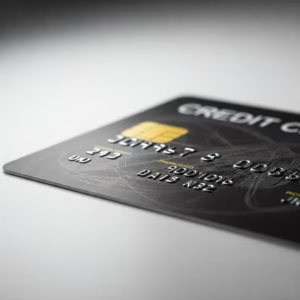How to improve your credit card security
Learn how to increase the security of your credit card

In today’s digital age, protecting your financial information is more critical than ever. Your credit card is a valuable asset, and safeguarding it from unauthorized access should be a top priority. While basic security measures are essential, implementing advanced techniques can significantly reduce your risk of becoming a victim of fraud. This guide will walk you through actionable steps to bolster your credit card security and enjoy greater peace of mind.
Implement Multi-Factor Authentication (MFA) for Online Accounts Linked to Your Credit Card

Moving beyond simple passwords is crucial. Multi-Factor Authentication (MFA) adds an extra layer of security by requiring not just your password but also a second verification method. This could be a code sent to your phone via SMS, a biometric scan (fingerprint or facial recognition), or a one-time password generated by an authenticator app. Enable MFA on all online accounts linked to your credit card, such as your online banking portal, e-commerce websites where you have saved your card details, and payment processors. This makes it significantly harder for unauthorized individuals to access your accounts, even if they somehow obtain your password.
Leverage Virtual Credit Card Numbers for Online Purchases
Consider using virtual credit card numbers when making online purchases. Many credit card issuers and third-party services offer this feature. A virtual card number is a temporary, randomly generated number that is linked to your primary credit card account but has its own unique card number, expiration date, and credit limit. If a virtual card number is compromised in a data breach, your actual credit card details remain safe. You can often set spending limits and expiration dates for these virtual cards, providing even greater control and security for specific transactions or merchants.
Regularly Monitor Your Credit Report for Suspicious Activity

Proactive monitoring of your credit report is a powerful tool in identifying and addressing potential fraud early. You are entitled to a free credit report from each of the three major credit bureaus (Equifax, Experian, and TransUnion) annually2 through AnnualCreditReport.com. Review these reports carefully3 for any unfamiliar accounts, inquiries, or payment histories that you don’t recognize. Setting up alerts with your credit card issuer or a credit monitoring service can also notify you of significant activity, such as large transactions or changes to your personal information. Early detection allows you to take immediate action to minimize potential damage.
Secure Your Digital Wallet and Mobile Payment Apps with Strong Biometrics
Digital wallets and mobile payment apps offer convenience, but they also store sensitive credit card information. Ensure these apps are secured with strong biometric authentication, such as fingerprint or facial recognition, in addition to a strong PIN or password. Avoid using easily guessable PINs and enable any additional security features offered by the app. Be cautious about using public Wi-Fi when making mobile payments, as these networks can be less secure.
Implement Network-Level Security Measures at Home

Your home network is the gateway for many online transactions. Secure it properly by using a strong, unique password for your Wi-Fi network (avoid default passwords). Enable Wi-Fi Protected Access 3 (WPA3) if your router and devices support it, as it offers stronger encryption than older protocols. Ensure your router’s firmware is up to date, as updates often include security patches. Consider enabling your router’s built-in firewall for an additional layer of protection against unauthorized access to your network.
Be Vigilant Against Phishing and Social Engineering Scams Targeting Credit Card Information
Cybercriminals are constantly devising sophisticated phishing and social engineering tactics to trick you into revealing your credit card details. Be extremely cautious of unsolicited emails, text messages, or phone calls that request your personal or financial information. Legitimate financial institutions will never ask for sensitive details via these channels. Look for red flags such as grammatical errors, suspicious links, and a sense of urgency. If you are ever unsure about the legitimacy of a communication, contact the institution directly through a verified phone number or website.
Review Your Credit Card Statements Regularly and Report Discrepancies Immediately
Don’t wait for your monthly statement to arrive in the mail. Regularly check your credit card transactions online or through your banking app. Look for any charges that you don’t recognize, even small amounts. Promptly reporting any discrepancies to your credit card issuer is crucial. Most credit card companies have zero-liability policies for fraudulent charges reported in a timely manner.

By implementing these advanced techniques, you can significantly enhance the security of your credit cards and reduce your vulnerability to fraud. Staying informed and proactive is your best defense in the ongoing battle against cybercrime.





